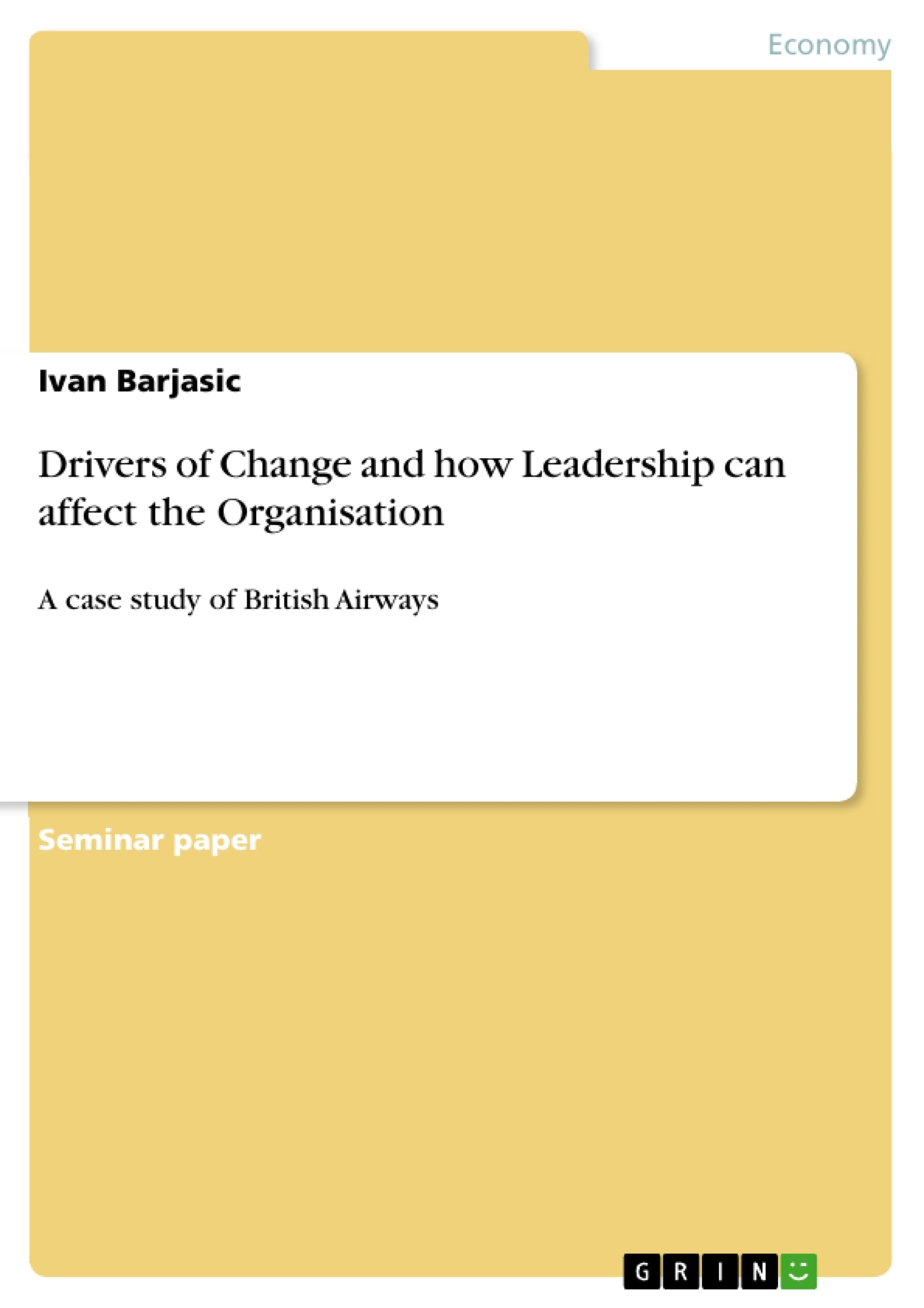In this era of hyper-competition, significant common factors or drivers can effect a forcible change on any business. For example, in relation to British Airways (BA), the intensification of hyper-competition from other flight companies such as Ryanair and easyJet, who can produce superior goods and cheaper ticket prices, and the introduction of new technology and changing consumer preferences have resulted in BA having to redefine its business goals.
Inhaltsverzeichnis (Table of Contents)
- Drivers of Change in an Organisational Environment
- How These Drivers Affect British Airways (BA)
- Financial Implications
- Human Resource (HR) Implications
- Legal Implications
- How One Driver Affects BA
- What Changes are Required at BA?
Zielsetzung und Themenschwerpunkte (Objectives and Key Themes)
This case study examines the impact of change drivers on British Airways (BA) and explores how effective leadership can address the resulting challenges. The study uses BA as a case study to analyze the influence of change drivers and leadership strategies in an organizational context.
- Drivers of organizational change (political, economic, social, technological)
- Impact of change drivers on BA, particularly financial, human resource, and legal implications
- Importance of effective leadership in managing change and navigating organizational challenges
- Different leadership theories and their applicability to BA's situation
- Importance of adapting leadership style and behaviour to address specific challenges
Zusammenfassung der Kapitel (Chapter Summaries)
The first chapter introduces the concept of drivers of change in an organizational environment, specifically focusing on political, economic, social, and technological factors (PEST). The study then applies these drivers to British Airways, examining their impact on BA's financial performance, human resources, and legal compliance.
The second chapter explores the specific implications of change drivers on BA, including the financial strain caused by competitive pressure and rising fuel costs. The chapter also discusses the potential consequences for human resources, such as job cuts and staff unrest, and the legal implications of BA's uniform policy.
The third chapter analyzes the consequences of these change drivers, particularly focusing on the strained relationship between BA management and staff, leading to potential workplace conflict. The chapter suggests that this fractured relationship could negatively impact BA's long-term sustainability.
The fourth chapter outlines several changes required at BA, including revising leadership skills, adapting leadership attitude and behaviour, implementing effective change management, and considering supportive leadership styles. The chapter emphasizes the need for thoughtful planning, gradual implementation, and continuous consultation with employees during change processes.
Schlüsselwörter (Keywords)
The primary keywords and focus topics of this text include organizational change, PEST factors, leadership theories, leadership styles, change management, British Airways, airline industry, human resource management, and workplace conflict. The case study explores the intersection of these themes within the context of a large, complex organization facing multiple challenges.
- Quote paper
- Ivan Barjasic (Author), 2009, Drivers of Change and how Leadership can affect the Organisation, Munich, GRIN Verlag, https://www.grin.com/document/153790



